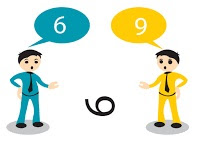Win -Win Mindset

Now, let us understand more about the mindset, behaviors, and practices that highly influence people to apply when dealing with people and situations. They have never been perceived as commanding, misusing power, or rude, and people love to work with them. They easily get things done in the workplace despite the challenges.
Understanding and practicing those mindsets, behavior, and practices will help you become a high-influencing person in the workplace.
One such primary mindset that influences people to operate is a Win-Win mindset.
What is a Win-Win mindset?
Win-Win is a state of mind in which we look for mutual benefit in any interaction or business deal.
It is more about being empathetic about another person while focusing on your objective, fair, and flexible in finding a solution that meets both requirements.
Influential people ensure that the other person's needs are met in any interaction with others, either a small conversion or significant business deal sign-off.
For example,
You are spending time with one of your colleagues, and after the conversation, if both of them feel good about the interaction, get some value or solution or agreed upon mutual agreement. It is a win-win situation, and both of them win together.
If any of you leaves with an upset mood or gets humiliated or unheard, then there is a possibility of both of you being in a situation of lose-lose or lose-win, and either way, that will not be helpful.
In the same way, any business partnership works on a win-win basis only.
For example, one product organization signs a partnership agreement with the distributor. The organization has products but needs more marketing and distribution reach to customers. The distributor has access to customers but needs more products. When both sign the deal, they share the mutual value and gain revenue together. That is a win-win.
If anyone feels that the other person is exploiting others, it becomes a win-lose, and the partnership eventually breaks.
There is always an argument that it is not possible to have a win-win situation and mindset all the time. If both do not realize a win-win in the long run, the association or deal is not sustainable. In the short term only it works.
We can be in a win-win mindset only when we feel good about ourselves and are optimistic about our outlook. That needs awareness and practice.
This win-win concept is underrated, and if we apply it in all interactions and dealings, the ability to get things done will improve.
Based on this fundamental win-win mindset, some behaviors and practices are built upon, and let us discuss them further.
Have a great week ahead!

















